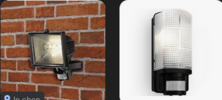The RCD measures current in and current out, and if within around 27 mA of each other it assumes nothing has gone to earth. The problem is either line or neutral to earth and it can trip, and the neutral is often not switched.
So switching off often does not help, only unplugging, even turning of a overload (switches in the consumer unit) may not remove the fault.
So we look for a likely cause. The more power used, the greater the difference between neutral and earth, so even if the fault is on the lights, the load on sockets may make it trip, so now you have tried to unplug all you can, next is look at likely items which may have got water in, outside lights, outside sockets. Sockets under the sink supplying the waste disposal unit, clearly shower isolator off, etc.
I had it when my balcony leaked, water went into socket under it. And it actually damaged socket only option was a new one.
When the power can't be switched on we use an insulation tester, these use 250, 500, or 1000 volt to find the fault, the 9 volt used in a multi-meter is often not good enough. The meters are not cheap, so really electrician needs to be called. You have not said where you live, if you lived close I would pop around.
With a switched FCU make sure switched off, just pulling fuse not good enough.
The regulations actually say "Every installation shall be divided into circuits, as necessary, to:
(i) avoid hazards and minimize inconvenience in the event of a fault" but continue to say "
(iv) reduce the possibility of unwanted tripping of RCDs due to excessive protective conductor currents produced by equipment in normal operation (17th ed)
(iv) reduce the possibility of unwanted tripping of RCDs due to excessive protective conductor (PE) currents not due to a fault (18th ed)"
It does seem to on one hand say faults should be considered then 3 lines down say they need not be considered, PE stands for protective earth, however it does seem to say these PE currents should be measured, and back in 2008 before I retired we did not really measure the back ground leakage, we are now told should be less than 30% of the RCD rating (9 mA with a 30 mA RCD) but for years we fitted duel RCD consumer units without really paying much attention to back-ground leakage.
There are other things as well, pre the RCD age we would split rings left and right of a house, so if there was a fault it would not require an extension lead up/down stairs, and also the load was more even between the rings, and it used less cable, so better loop impedance and cheaper. But this "minimize inconvenience in the event of a fault" was read as arranging circuits so one RCD tripping would not cause loss of both lights and sockets in any one room, it was hard to split lights side to side, so sockets were split up/down so upper sockets would be on same RCD as lower lights.
With the advent of RCBO's there is no need for upper/lower split with sockets, but now it has become standard practice, we have the "we have always done it this way" culture, who do not consider why.
As to changing things to stop a repeat in the future, I looked for the WCED make and RCBO's are £9.99 each, I had not heard of
before, so likely it will require mail order, is £60 worth it not to loose all?


